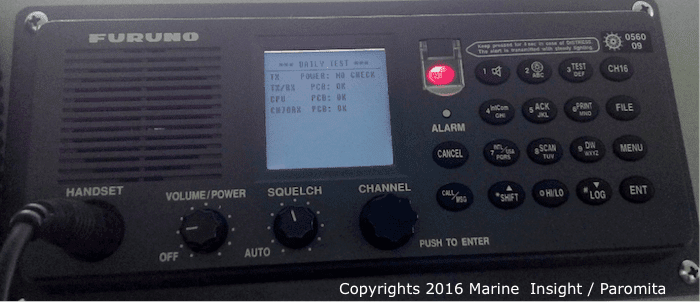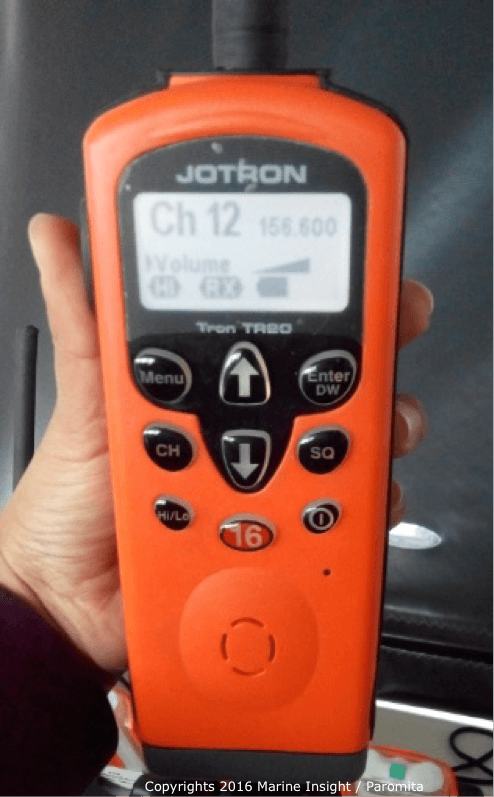Introduction to GMDSS
During the 18th century, the ships sailing in international and coastal waters were dependent on the Morse code to send any kind of distress signal to a coastal authority or ships in the nearby vicinity during an emergency.
Since it was a transmission of texture information using tones or lights, this kind of message was never very clear to understand what kind of emergency onboard ships.
Therefore, an internationally agreed safety procedure was adopted by IMO under SOLAS chapter IV which is known as GMDSS- Global Maritime Distress Safety System.

GMDSS and its Uses
On 1st Feb 1999, the fully implemented GMDSS came to picture. It was a set standard for usage of communication protocol, procedures and safety equipment to be used at the time of distress situation by the ship.
Under GMDSS, all the passenger ships and cargo ships above 300 GT involved in the voyages in international waters have to carry equipment as per GMDSS.

When aship uses GMDSS, it basically sends a distress signal via a satellite or radio communication equipment. It’s also used as a medium for sending or receiving maritime safety information and general communication channel.
Read ->Daily, Monthly and Weekly Tests Of GMDSS equipment on board Ships
In the GMDSS framework, there are different Sea Areas to allot the working equipment in the respective area. They are as follows:
| AREA | RANGE | EQUIPMENT |
| A1 | 20 to 50 M | VHF DSC |
| A2 | 50 to 400 M | VHF + MF |
| A3 | 70° N to 70° S | VHF + MF + One INMARSAT |
| A4 | Above 70° N or S | HF + MF + VHF |
To understand the above table further, the following are the ranges with regard to the frequencies in a specific band:
Very High Frequencies (VHF)
For the purposes of maritime communication, the range of 156 MHz to 174 MHz is allocated. Channel 16, which is set at 156.800 MHz, is for Distress, Urgency and Safety communication. Channel 70, set at 156.525 MHz, if for routine VHF DSC (Digital Selective Calling) watch.
GUARD channels are set put above and below Channel 16 to avoid any interference on Channel 16. One cannot have seamless traffic on Channel 16 with interference with regard to other communication aside from distress, safety and urgency. So the Guard channel frequencies are 156.775 MHz and 156.825 MHz.
Among other things, the VHF set runs on a 24 Volt DC supply with J3E type of transmission for Radiotelephony and G2B type of transmission for VHF DSC.
The different elements of GMDSS are as follows:
Documents to be carried onboard with regard to GMDSS:
GMDSS Training
The handling of GMDSS equipment requires certified training as well as licensing from the Telecommunication department of the department. The General Operators Certificate (GOC) is mandatory in order for an officer to be allowed to handle GMDSS equipment onboard the ship.
To obtain this GOC, a short course is compulsory to attend following which an exam is conducted (written and oral), which needs to be cleared. This training is aimed at Cadets who ought to become licensed Radio Operators to operate all the equipment in conjunction with the regulations laid out for GMDSS.
The training period is around 12 days and owing to the course being mandatory, it is advised to call into an approved institute to book a seat for a future date, well in advance. Depending on which country the individual is from, they must check the respective institute websites as well as the Ministry of Shipping (or whichever applicable for their country) website to get the full details on eligibility and criteria for admission into the GMDSS course.
Over the period of the course, the officer is taught about the various aspects of GMDSS ranging from Radio Log to sending INMARSAT messages and all such aspects of it which will be required when carrying out communication onboard. The written exam tests the theory whereas the oral examination is a one on one session with a surveyor who tests the individual on the different aspects of GMDSS, covering the whole syllabus (theory as well as practical).
Recommended GMDSS Books:
GMDSS – A Guide For Global Maritime Distress Safety System
GMDSS – A User’s Handbook
Admiralty List of Radio Signals (ALRS) Volume 5: GMDSS
NP285 or ALRS Vol. 5 is the publication with extensive information in theory as well as practical use for all things pertaining to the GMDSS. Correction for this is found in Section 6 of the weekly Notices To Mariners (TNM). Its contents cover as follows:
Portable Marine Radio
The portable marine radio or the survival craft transceiver, a very important element of the GMDSS, is a piece of equipment located in the bridge in case the ship’s personnel have to board the survival craft but they may be used for communication on board as well.

In case it’s used in an emergency, it is used for on-scene coordination between the survival craft and the search and rescue units. The IMO requirements for the survival craft transceivers are as follows:
The scope of GMDSS is vast and extensive reading on it, through publications and manuals and all other available means is the only way to get better at handling the equipment and gain further knowledge about the setup.
Being a mandatory setup onboard ships which is also the key setup with regard to emergency situations, it is actually in self-interest for the ship’s officer to gain maximum know-how on every aspect of the GMDSS.






